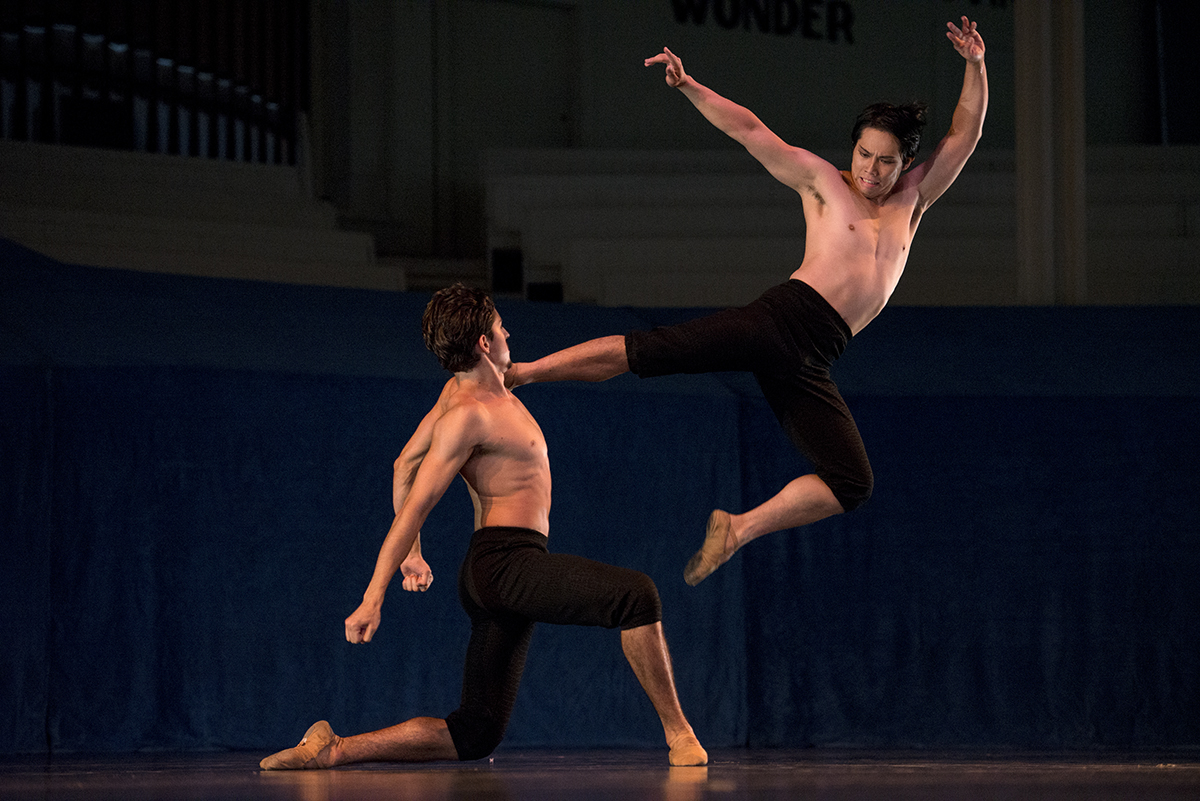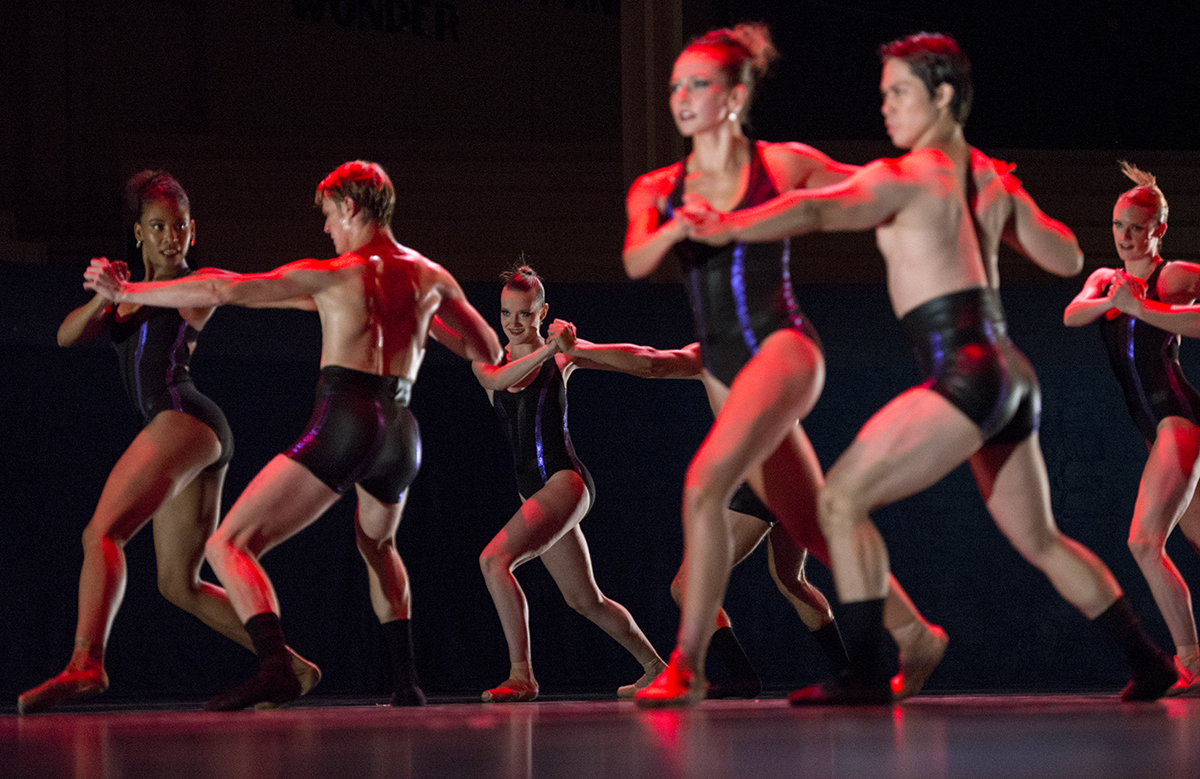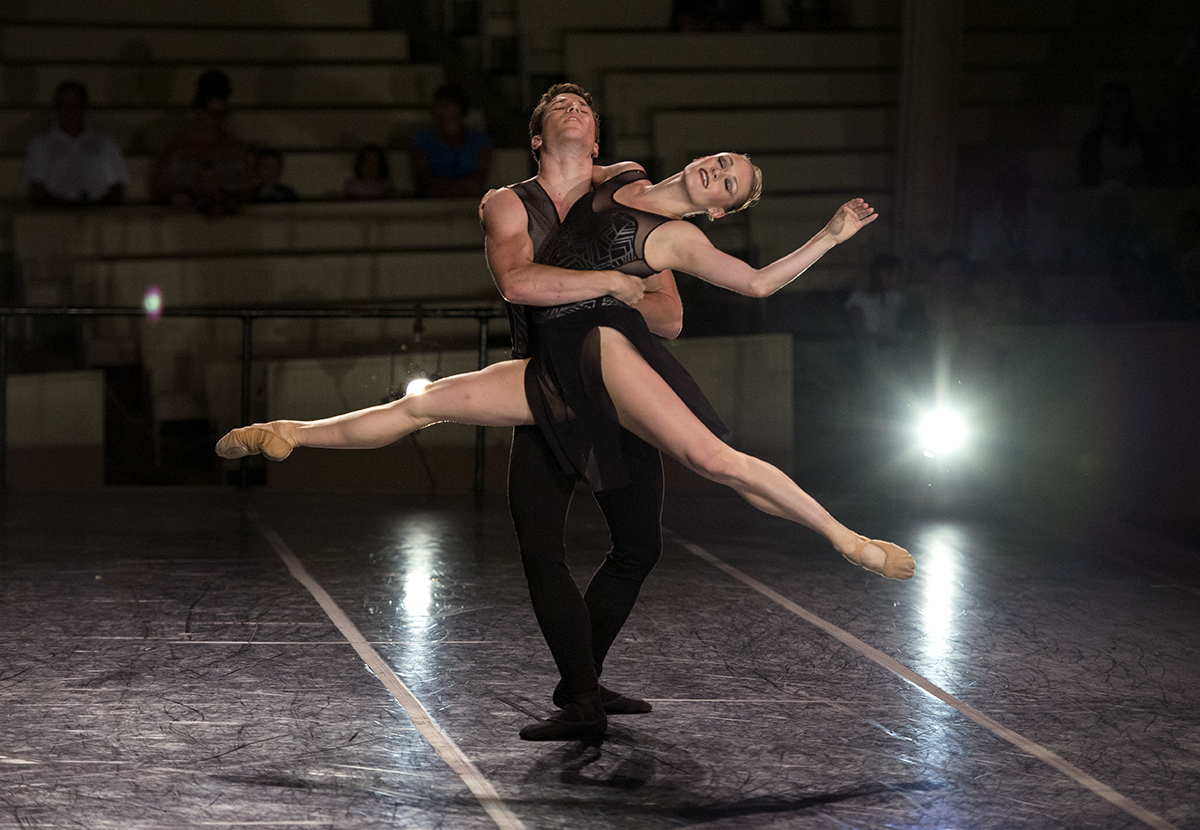Modern master Merce Cunningham thought dance and music existed in parallel universes and never the twain should meet until dress rehearsal. On the other hand, modern ballet master George Balanchine was able to weld his movements indelibly to the music from the start without losing their individuality.
Most of today’s choreographers, however, fall somewhere in between, expressing the atmosphere or meaning inherent in the music without being overly specific.
Such was the case with Charlotte Ballet’s latest edition of Dance Innovations in the Amphitheater Wednesday night, where each of three choreographers tried to capture a sense of adventure that would, in turn, capture the audience at the same time.

And that, my friends, is what the Alvin Ailey American Dance Theater does so well in contemporary/modern dance and something that Charlotte emulates through ballet by tapping the large, welcoming personalities of Artistic Director Jean-Pierre Bonnefoux and Associate Artistic Director Patricia McBride, much to the delight of Chautauqua audiences.
Even with that acknowledgment, there was a varying degree of artistic success to the evening.
“Yamato” evolved from a dominant native ethnic group to embrace all of Japan in the new Mark Diamond work. Indeed, we witnessed a birth, symbolized by Ryo Suzuki, who emerged from a tight-knit group to the sounds of Kodo-like drumming in an original score by Charlotte resident Rocky Iwashima.
The piece unfolded like a condensed history of the Japanese nation with fighting and silent screams, but ending in solidarity and a thrust into the future. Although it grasped at the Japanese culture, with six women dressed in kimonos and familiar movements such as Kabuki-esque head tilts and hand positions, it was actually a showcase for Suzuki’s bold Russian training and Diamond gave him virtually every trick in the book, hence the audience’s avid response. In the end, though, “Yamato” merely scratched the surface in pseudo-Japanese style.
During the second piece on the program, Sasha Janes may have forcibly pushed together the titles from the only two Jeff Buckley albums, Grace and Sketches for My Sweetheart the Drunk, to form the title of his latest ballet, “Sketches from Grace.” But his intent was honest and true of heart.

It was easy to hear why Janes picked Buckley, whose soulful delivery has so many undercurrents of emotion and Janes picked up on that in the choreography.
Buckley’s songs have seductive layers drawn out of a not-so-perfect life. “The calm below that poisoned river wild.” “Was hypnotized by a strange delight under a lilac tree.” “So I’ll wait for you and I’ll burn. Will I ever see your sweet return? Oh, will I ever learn?”
“Sketches” focused on the relationships between three couples, with nothing absolute. “Hallelujah,” the cover of Leonard Cohen’s iconic song that didn’t erupt in popularity until 2008, 11 years after Buckley’s tragic drowning during a spontaneous swim in the Mississippi River in 1997, lingered in the mind long after the performance.
Performed with a luminous passion by Sarah Hayes Harkins and Josh Hall, it had the most depth — a woman yearning to be free and a man who would do anything to keep her.
The images were plentiful, especially when Hayes Harkins crouched on Hall’s back. He placed his hands underneath her feet, whereupon she was able to stand tall as he turned, reaching for an inexplicable dream — a powerful moment. But then, Janes is able to find those meaningful moments and make them sing.
The first section, “You and I,” contained many fluctuating tensions, from tenderness to flurries of what alluded to angry physical exchanges. The opening and closing images, where James Kopecky carried a tangled Chelsea Dumas around his shoulders as he walked, spoke volumes.
That also speaks to Janes’ talent when it comes to sculpting a seemingly infinite series of fluid forms, even when focusing on the seemingly simple interactions between a man and a woman.
In the other “Sketches,” Elizabeth Trull and Ben Ingel needed to dig a little deeper in “Lilac Wine.” “Lover You Should’ve Come Over,” which brought the cast together at the end, served mostly to point up, as William Shakespeare put it, “We know what we are, but know not what we may be.”
Or, as Janes may think, better to move into that uncertain future with a partner. Or, as Charlotte Ballet resident choreographer Dwight Rhoden often asserts, it’s better to tackle the future with a crew.
He is noted for his what many critics say is “busy” choreography, although he is beginning to edit his wealth of dance ideas with an expert hand. Hint: he is also an alumnus of the Alvin Ailey company.
And what better topic than club dancing, where young crowds gather to move and groove. Yes, appropriately called “The Groove,” Rhoden’s work premiered with Charlotte Ballet and was seen here in 2013.
Beginning with a meandering series of walks to warm things up, Raven Barkley stepped into a spotlight to caress the back of a surprisingly funky Kopecky.
Signature disco strings emanated from the Pet Shop Boys musical mash up and a sultry Donna Summer voice reverberated over the two dancers as they undulated their hips.
It might have started off in the ’80s, but Rhoden is never confined. It was easy to spot the Pony (’60s) and some more contemporary hip-hop moves along the way, along with those Beyoncé booty calls.
Hayes Harkins and Hall made a night of it with consistently strong performances — she like an Energizer Bunny who never stopped and he with a dynamic solo that fulfilled his promise last year.
They were only capped by the bows. “The Groove” has one of the best finales I’ve ever encountered, which is probably why he staged it for his own company, Complexions, last year.
The group took a bow. Then the men. And the women. And various combinations. In between they, well, grooved. The audience began rhythmic clapping, alternating with bursts of applause.
This was feel-good dance that easily could have spilled into the aisles, a la “Dirty Dancing.”
All it needed was a mirror ball.
Jane Vranish is a former dance critic for the Pittsburgh Post-Gazette and continues there as a contributing writer. Her stories can be read on the dance blog “CrossCurrents” at pittsburghcrosscurrents.com.





